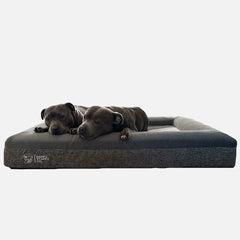Training a dog is a journey that blends patience, consistency, and the right motivators. Among the most effective tools in your training toolkit are treats—small but powerful incentives that help reinforce desired behaviors. From basic obedience to advanced tricks, using dog treats correctly can accelerate your dog’s learning while strengthening the bond between you. The key lies in timing, variety, and an understanding of what motivates your individual dog, whether you’re teaching a puppy to sit or helping a senior dog learn something new.
Incorporating treats into training is not just about handing over food—it’s about positive reinforcement done right. Reward-based training helps dogs associate commands with positive outcomes, making learning enjoyable rather than stressful. Whether you’re dealing with a high-energy Staffy, a laid-back Golden Retriever, or a sensitive rescue dog, understanding how and when to offer treats plays a pivotal role in achieving lasting behavioral results. Using the right strategy can make all the difference in developing well-mannered, confident pets across all breeds.
Understanding the Value of Treats in Dog Training

Treats are more than just snacks—they’re communication tools. When used effectively, they serve as clear signals to your dog that a behavior is desirable and worth repeating. This is especially crucial in the early stages of training, where consistency and clarity lay the foundation for future learning. Treat-based reinforcement capitalises on the dog’s natural desire to please and earn rewards, making training sessions more productive and enjoyable.
Why Positive Reinforcement Works
-
Encourages repeat behavior
-
Builds confidence in your dog
-
Strengthens the human-dog relationship
-
Reduces anxiety during training
However, the value of a treat depends on how it ranks in your dog’s eyes. Some dogs will work for kibble, while others need high-value rewards like cheese or freeze-dried liver to stay engaged. Understanding your dog’s preference hierarchy helps you select the right treat for the right context—using low-value treats for easy tasks and saving high-value ones for new or challenging commands.
Choosing the Right Treats for Training
Not all treats are created equal, especially when it comes to training. The best training treats are small, soft, and easy to chew so your dog doesn’t lose focus while eating. Quick consumption is key to maintaining momentum in training sessions. Soft jerky pieces, training-specific nibbles, or even healthy homemade options can work well.
What to Look for in a Training Treat
-
Soft texture for quick chewing
-
Small size for frequent use
-
All-natural or single-ingredient
-
No artificial preservatives or colors
-
High reward value to your specific dog
In addition to texture and size, consider the ingredient list. Avoid treats with unnecessary fillers, artificial colors, or preservatives. For sensitive dogs or those with dietary restrictions, hypoallergenic options or single-ingredient treats may be best. Always factor in your dog’s daily caloric intake to prevent overfeeding, especially during intensive training periods.
Timing Is Everything: When to Give Treats
One of the most crucial aspects of using treats in training is timing. The reward should follow the desired behavior immediately—ideally within seconds—so your dog clearly associates the two. Delays can confuse the dog and weaken the behavioral link. When teaching something new, offer the treat every time the behavior occurs. Once it’s reliably performed, start rewarding intermittently to strengthen the behavior without creating dependency.
Best Practices for Treat Timing
-
Deliver within 2–3 seconds of behavior
-
Use a marker word like "yes" or a clicker
-
Maintain a calm, focused energy
-
Avoid preemptively showing the treat
-
Don’t reward unwanted behaviors accidentally
Treat delivery should also be intentional. Offer it calmly and directly to your dog to maintain focus. Avoid waving the treat around or using it as a bribe, as this can dilute its training impact. Pair the treat with verbal praise or a marker word like "yes" or a click from a clicker for maximum reinforcement.
Treat Placement and Reinforcement Techniques
Where you give the treat can influence how your dog performs. For example, if you're training a heel command, deliver the treat by your side rather than in front of your body. This reinforces the correct position and helps shape future behavior more precisely.
Types of Reinforcement Schedules
-
Continuous Reinforcement: Reward every successful behavior. Best for early learning.
-
Fixed Ratio: Reward after a specific number of correct responses.
-
Variable Ratio: Reward randomly. Increases resistance to extinction.
-
Fixed Interval: Reward after a set period of time.
-
Variable Interval: Reward at unpredictable intervals.
Incorporating a mix of praise, touch, and treats can build more robust and lasting behavior patterns.
Avoiding Common Mistakes in Treat-Based Training
While treats are powerful, they can also become crutches if not used thoughtfully. One common mistake is rewarding poor timing—giving a treat when your dog is jumping up, barking, or displaying unwanted behavior. This teaches the wrong association. Another issue is overfeeding, which can lead to weight gain or nutritional imbalances.
Mistakes to Watch Out For
-
Giving treats too late or too early
-
Rewarding unintentional behaviors
-
Overusing high-calorie treats
-
Using treats to distract rather than teach
-
Failing to wean off treats gradually
To avoid dependency, gradually transition to a mix of rewards. Use verbal praise, playtime, or a favorite toy as alternative reinforcers. Also, avoid using treats as a distraction to bypass addressing behavioral problems. Effective training involves addressing root causes, not just masking them.
Phasing Out Treats: Transitioning to Real-Life Rewards
Once your dog reliably responds to commands, it’s time to phase out treats and shift toward real-life rewards. These can include going for a walk, playing fetch, or receiving affection. This transition helps generalise learned behaviors and encourages your dog to perform without expecting a food reward every time.
Real-Life Rewards That Work
-
Opening the door for outside play
-
Allowing off-leash time in safe spaces
-
Interactive play sessions
-
Verbal praise and enthusiastic tone
-
Belly rubs or physical affection
However, don’t eliminate treats too quickly. Gradual reduction—paired with increasing difficulty or distractions—helps maintain strong performance. Occasional treat surprises can keep the behavior fresh and the dog motivated.
Tailoring Your Approach for Different Breeds and Personalities
Every dog is unique. A Staffy may need high-energy, short sessions with exciting treats, while a Border Collie may thrive with mental stimulation paired with moderate food rewards. Adjust the treat value, timing, and training environment to suit your dog’s temperament and needs.
Adjusting for Age and Temperament
-
Puppies: Use frequent, gentle rewards and keep sessions short
-
Seniors: Lower energy sessions with soft, easy-to-digest treats
-
High-energy breeds: Include physical activity and fast-paced games
-
Shy or fearful dogs: Combine treats with calm encouragement
Breed tendencies, age, health, and past experiences all play a role in how a dog learns. Rescue dogs might need more patience and reassurance. Puppies have short attention spans, while seniors may benefit from gentler, slower-paced sessions. Stay observant and responsive to cues that show how your dog is feeling.
Building Stronger Bonds Through Reward-Based Training
Effective treat-based training goes beyond obedience. It’s a chance to build trust, deepen communication, and share positive experiences with your dog. When done correctly, every session becomes a confidence booster that enhances your dog’s well-being and your relationship.
Long-Term Benefits of Treat-Based Training
-
Better behavior consistency
-
Improved recall and focus
-
Increased trust and cooperation
-
Stronger emotional connection
-
Reduced anxiety and stress during new experiences
Consistency, clarity, and kindness are at the core of reward-based methods. Over time, this approach fosters not just a well-trained pet, but a resilient, emotionally balanced companion. Using treats with purpose and mindfulness ensures your training efforts bring long-term success and joy.
Strengthen Training with the Right Tools and Mindset
Training with treats works best when paired with the right tools and a positive mindset. Essentials like a treat pouch, clicker, leash, and consistent verbal cues help create structure and drive results. Comfort also plays a role—having a cozy dog bed for rest after training, proper bowls for hydration and meals, and regular walks to release energy all contribute to a well-rounded routine. Equally important is your attitude—patience, enthusiasm, and calm energy create a space where dogs feel safe to learn.
At Happy Staffy Co., we understand how powerful the right reward system can be. Our collection of natural, nutritious dog treats is crafted to support all training stages while keeping your dog healthy and excited to learn. Choose treats that match your dog’s preferences and training goals, and you’ll see progress unfold with every session.







